
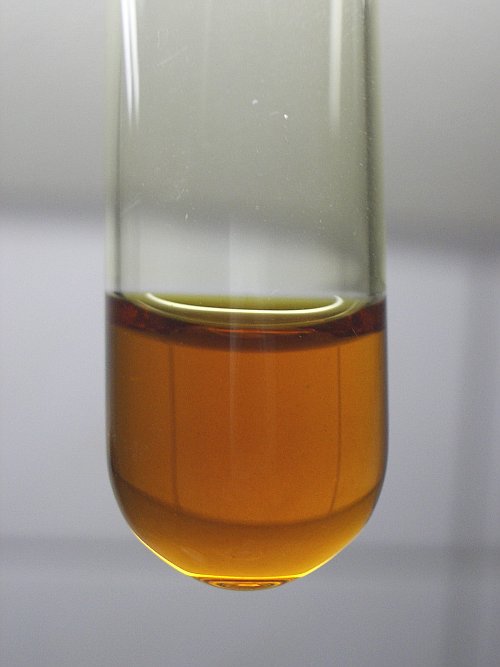

Aqueous solutions and precipitates of palladium
Palladium exists in aqueous solution in the +2 and the +4 oxidation states. In the +2 oxidation state, the simple hydrated palladium (II) ion exists, in the +4 oxidation state, only complexes of palladium (IV) can be in solution. In the absence of a suitable ligand, palladium (IV) immediately hydrolysis to form an ill defined compound with strong oxidizing properties which best can be described as "hydrous palladium (IV) oxide". The aqueous chemistry of palladium is quite rich and interesting.
The +2 oxidation state is the most stable. It is mildly oxidizing and with suitable reductors, it is easily converted to finely divided black palladium metal. The +2 oxidation state also can be oxidized to the +4 oxidation state, but that requires a very strong oxidizer. Oxidation state +4 is strongly oxidizing.
![]()
Oxidation state +2
This is the most common oxidation state in aqueous solution. Palladium forms the brown aqua-ion Pd(H2O)42+. It can easily be prepared by dissolving some palladium metal in moderately concentrated nitric acid. The left picture below shows a fairly dilute solution in nitric acid of a concentration of approximately 3 mol/l.
acidic
 alkaline
alkaline 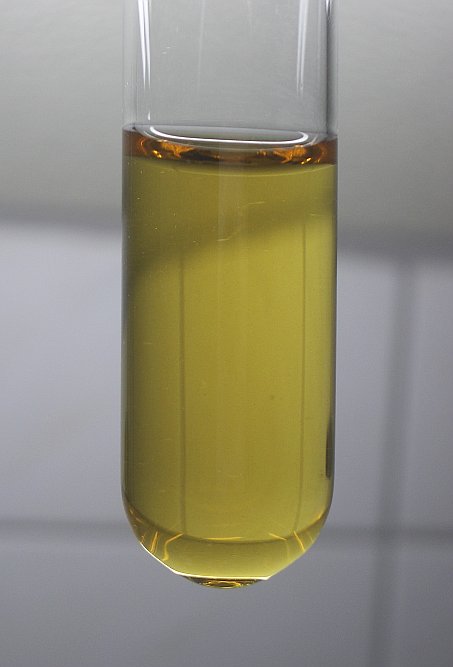
When a large excess of a solution of sodium hydroxide is added to this, then a brown precipitate is formed, which immediately redissolves again and a yellow solution is formed, which has a slight brown/golden tinge. This yellow solution is shown in the right picture above. Apparently, palladium has an amphoteric hydroxide. Remarkably, this is not mentioned in textbooks, although they do mention the hydroxide.
When the right solution is taken, and acid is dropped in very carefully, then the solution at a certain point turns turbid again. This again is a very strong evidence for amphoteric properties of the hydroxide. The two pictures below show the precipitate of Pd(OH)2. The left picture is after adding a carefully adjusted amount of acid, and the right picture is after adding a slight amount of alkali again to the left liquid. The color of Pd(OH)2 depends on the size of the particles and the precise method of preparation.
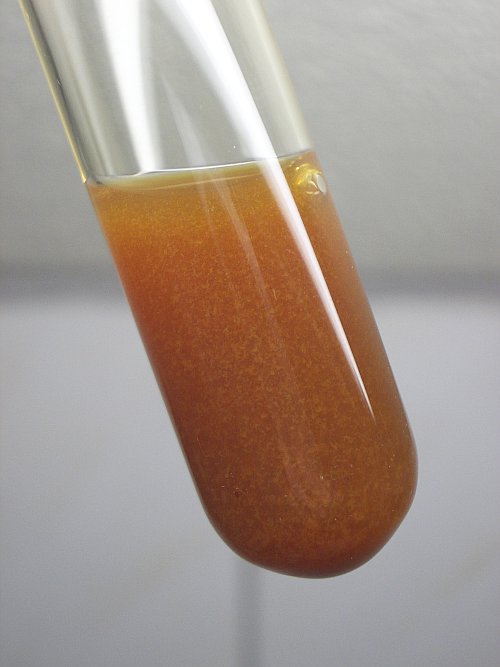
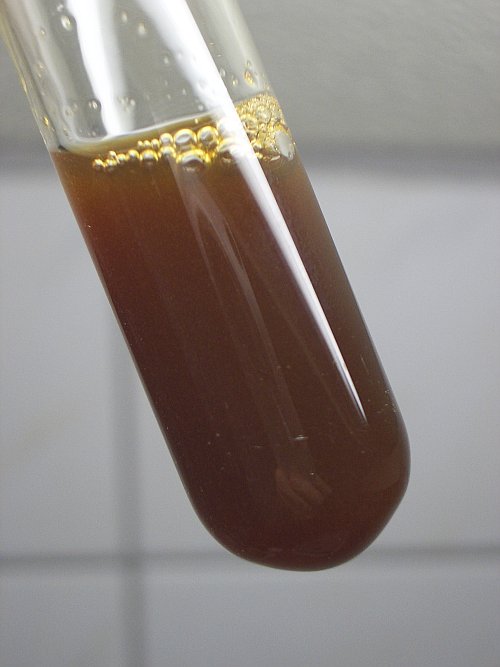
When the precipitate is heated/boiled, while left in the liquid, then it becomes much coarser and it quickly settles at the bottom. Also, its chemical composition seems to change. After heating, the precipitate does not dissolve anymore in excess solution of sodium hydroxide. Below, the heated precipitate is shown.
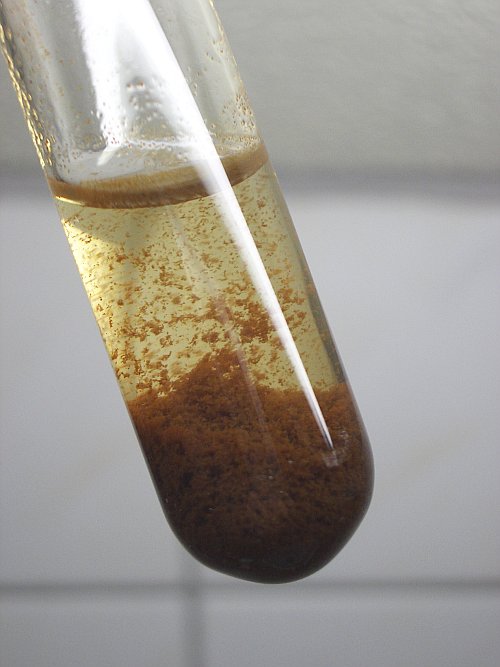
The heated precipitate still dissolves easily in acid, but it does not dissolve in alkali anymore. After the precipitate is dissolved in acid again, it can be converted to the amphoteric hydroxide again by carefully adding a solution of sodium hydroxide.
Commercial samples of palladium hydroxide are black. So, the precipitates shown here are different. These are hydrous precipitates, which better can be written as Pd(OH)2.nH2O. Probably, the larger the value of n, the easier the precipitate dissolves in alkalies.
Palladium(II) also forms a complex with chloride. When a solution of a chloride is added to a solution, containing the ion Pd(H2O)42+, then the liquid quickly darkens and a chloro complex is formed:
Pd(H2O)42+ + 4Cl– → PdCl42- + 4H2O
The potassium salt of this complex is sold as a commercial product by some photography raw chemical suppliers. It is used for certain noble processes, for making handcrafted art pieces. This chloro-complex has a darker color. Below follows a picture of two equal volumes of a solution with Pd(H2O)42+ in it, and to the right a small amount of a solution of NaCl is added. This comparison nicely shows the darker color of the chloro complex.
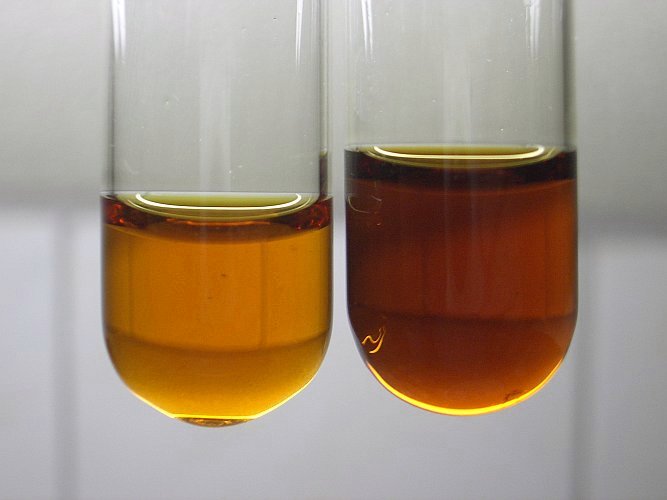
![]()
Oxidation state +4
Palladium does not form a stable aqua ion in the +4 oxidation state. Such an ion, when formed in solution, immediately hydrolyses, even at very low pH. However, when suitable ligands are present, then palladium can exist in solution in the +4 oxidation state.
A remarkable result is obtained, when a sufficiently strong oxidizer is added to a brown solution of palladium (II), which has no suitable ligands in solution. The brown solution, as shown at the start of the previous section on oxidation state +2, contains Pd(H2O)42+ and nitric acid. No ligands for palladium (IV) are present. When sodium persulfate (a strong and non-coordinating oxidizer) is added to this solution, and the solution is heated, then a dark red precipitate is formed, with a color, resembling that of red phosphorous.
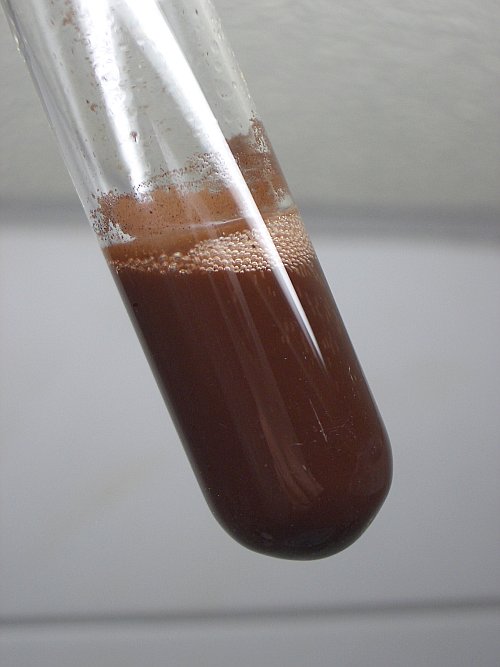
Also, quite some oxygen is released. The dark red precipitate is an ill-defined compound which cannot easily be described by a single formula. The best approximation one can give is PdO2.nH2O. This is a strongly oxidizing precipitate, which looses oxygen, when hot (as shown in the picture), but which is fairly stable at room temperature. However, even at room temperature, the compound slowly releases oxygen.
When a solution of palladium (II) is oxidized, in the presence of chloride ions, then a complex is formed and the palladium (IV) remains in solution. A deep and very bright red solution is formed. The color is due to the complex ion PdCl62-.
Pd(H2O)42+ + 6Cl– → PdCl62- + 4H2O + 2e
The same beautiful red solution is formed, when some sodium chloride is added to the dark red precipitate in the nitric acid solution. The precipitate dissolves and the complex is formed. It is really remarkable to observe that a precipitate quickly dissolves on the mere addition of simple table salt.
PdO2·nH2O + 6Cl– + 4H+ → PdCl62- + (2+n)H2O
Below follow two pictures of a solution, containing the PdCl62- complex. The left picture is with transmitted light, the right picture is at intense daylight with a white background. Especially in bright light conditions, the color of this complex looks really bright and it is very beautiful.
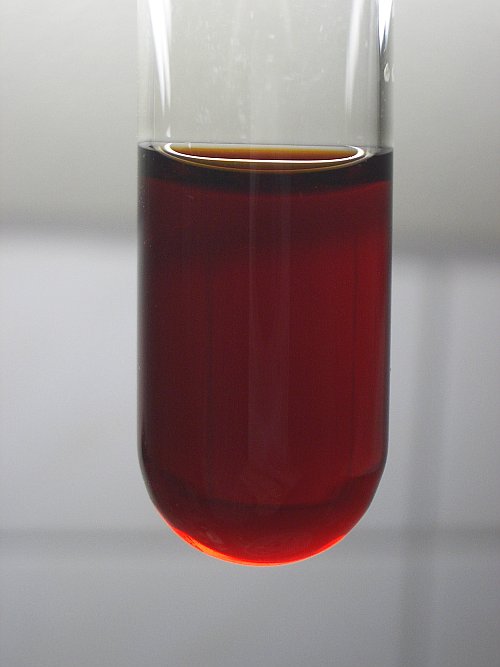
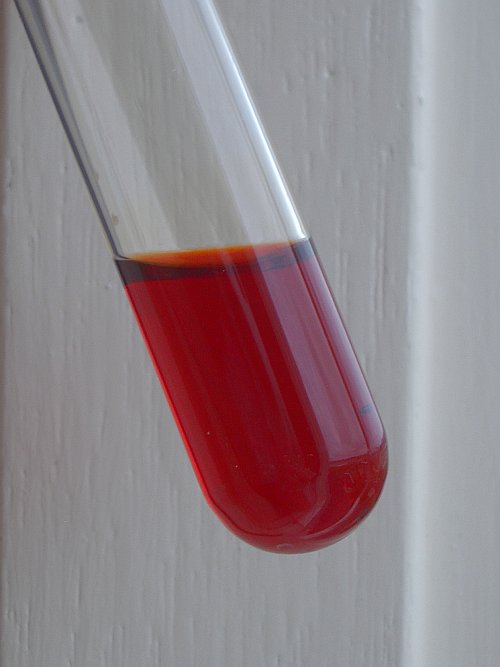
Even more special are the properties of this complex in combination with potassium ion or ammonium ion. This is one of the very few anions, which forms a precipitate with potassium ions almost quantitatively. With ammonium ions, also a precipitate is formed, but this still is soluble in water at appreciable amount.
When a solution of potassium chloride is added to a deep red solution with PdCl62- then a beautiful very bright orange/red precipitate of K2PdCl6 is formed. This precipitate is not formed at once, but slowly. With a little heating, the precipitate is formed at a faster rate.
When a solution of ammonium chloride is added to a solution with PdCl62- then an orange precipitate of (NH4)2PdCl6 is formed. This precipitate also has a bright color, but not as bright as the precipitate with potassium ion. This precipitate also is not formed quantitatively, still some palladium (IV) remains in solution.
The left picture shows the precipitate of K2PdCl6 and the right picture shows the precipitate of (NH4)2PdCl6.
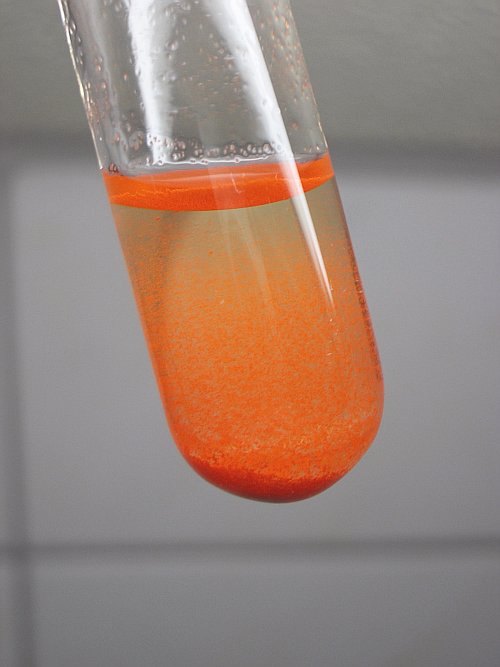
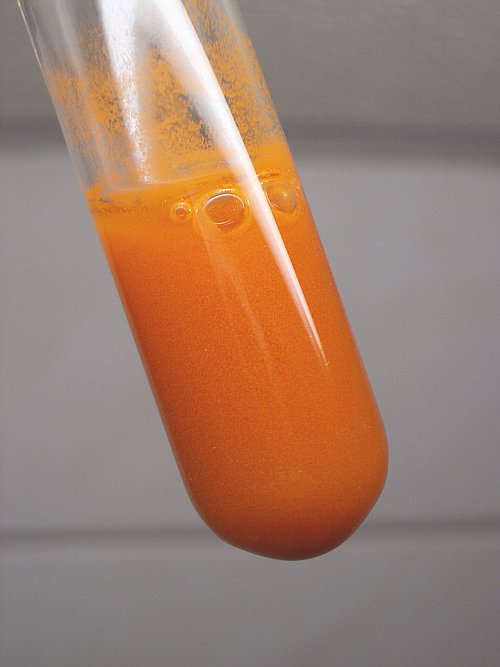
When the precipitate of K2PdCl6 is heated, then it does not change. The precipitate of the ammonium salt seems to darken on heating. The liquid becomes bright red, as shown in the picture below. On cooling down, the liquid with precipitate becomes lighter again, and its color reverts to the original orange color. The darkening probably is caused by partial dissolving of the precipitate of the ammonium salt, and the consequent release of deep red PdCl62- ions. On cooling down, these again precipitate with the ammonium ions. So, it is not the precipitate, which darkens, but the higher concentration of PdCl62- ions causes the darkening. This effect also demonstrates that the ammonium salt of PdCl62- is more soluble than the potassium salt.
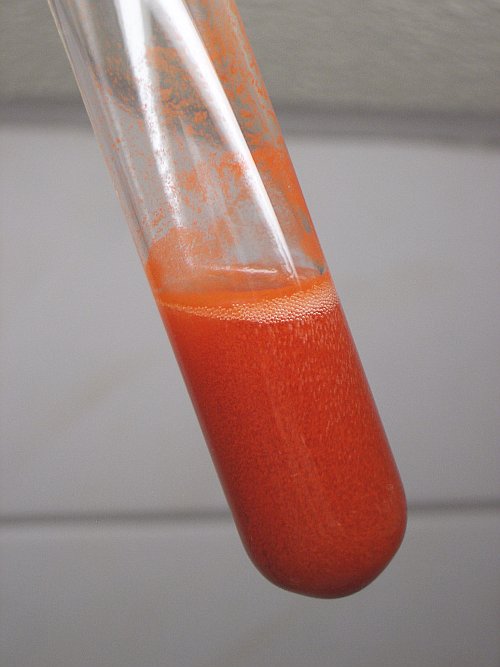
back to solutions/precipitates main page
back to miscellaneous main page